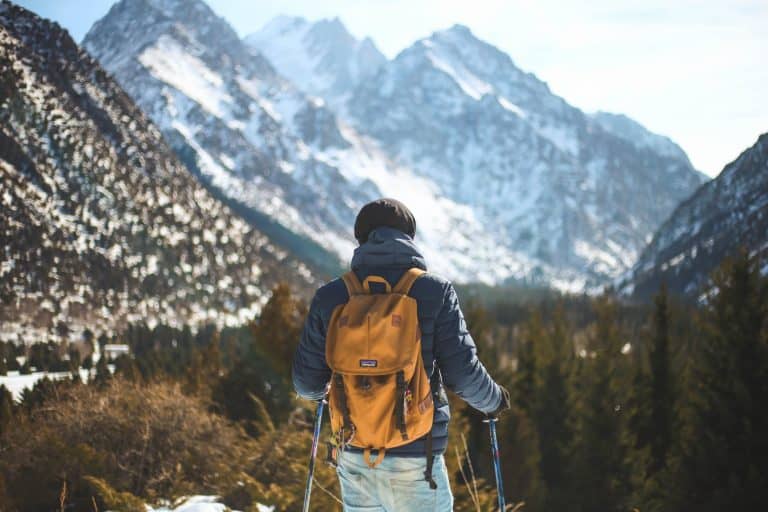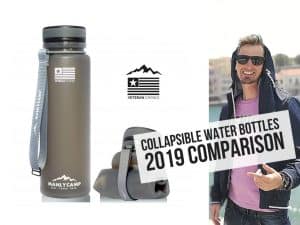The great outdoors is a magical place to explore, and backpacking and hiking are two of the most popular ways to experience the wonders of the landscape with your own two eyes. The beauty is that anyone can do it, young, old, experts or beginners. From exploring trails to hiking up mountains and delving into the deep woods, the possibilities are endless.
But for those just getting started out, there are some key tips and hacks that will help you make the most out of your exclusion and ensure you’ll have a safe and incident-free hike. As they say, failure to prepare is preparing to fail, and we want to help make sure your venture into the world of hiking and backpacking is an enjoyable one.
So without further delay, read on to learn about the top ten tips you can easily incorporate into your next outing…
Know Where You Are Going
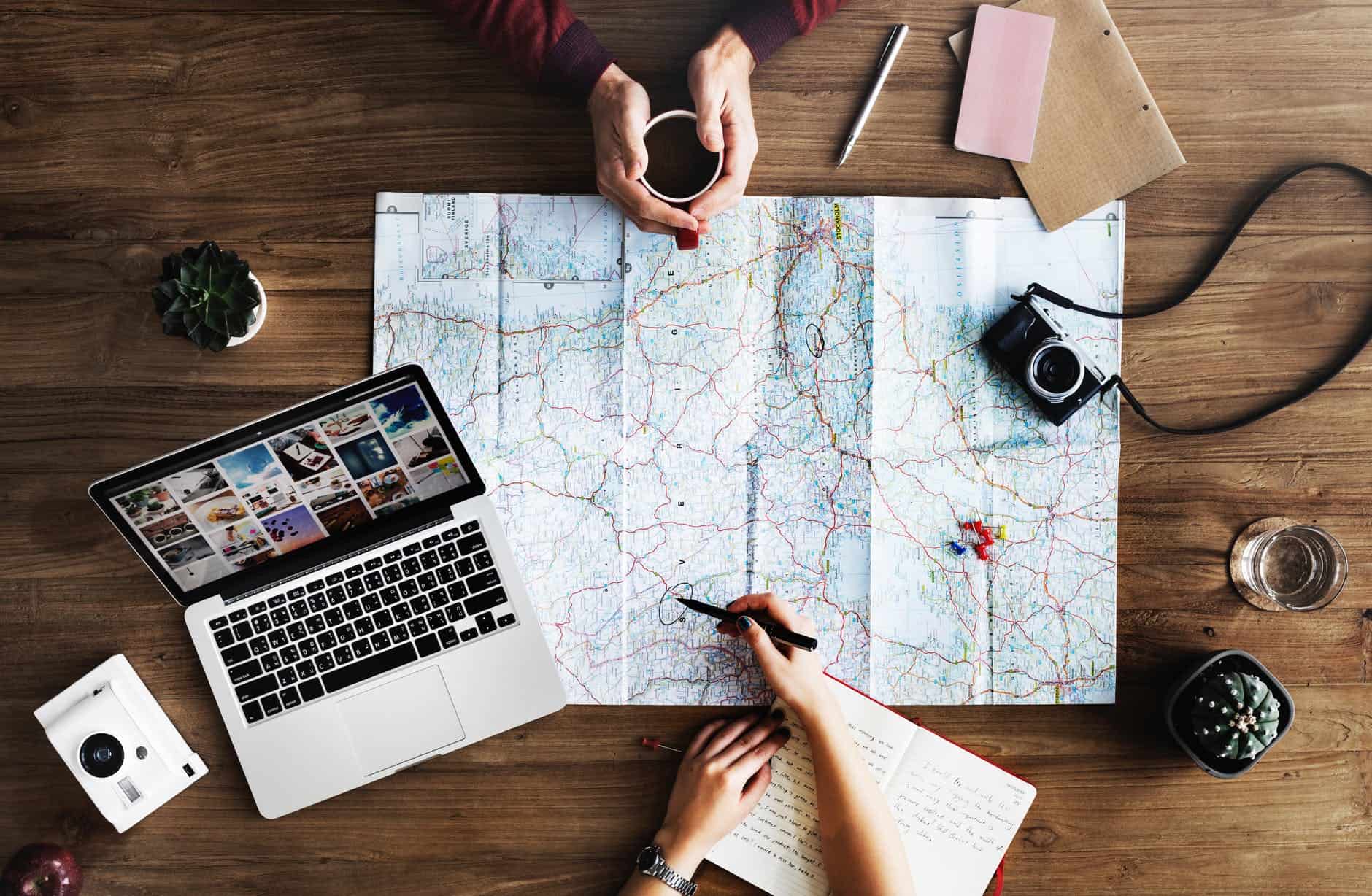 Planning: There are some great guidebooks out there for every region of the country that gives really explicit advice about the major hikes available in your target destination. These guidebooks explain exactly how to get to the trailhead, how long and strenuous you can expect the hike to be and what you will see along the way. Often, these guidebooks are also available online or in ebook version as well.
Planning: There are some great guidebooks out there for every region of the country that gives really explicit advice about the major hikes available in your target destination. These guidebooks explain exactly how to get to the trailhead, how long and strenuous you can expect the hike to be and what you will see along the way. Often, these guidebooks are also available online or in ebook version as well.
Understand the Area: Sometimes, newbie hikers don’t quite understand the seasonal nature of hiking. Yes, you sure can hike year-round. The question is where you actually can hike at what time of the year. Your guidebook will explain the best seasons to hike, and a front section of the book will explain the different climate micro-zones you will be hiking in, along with the different animals and plants you will encounter.
This is why this seasoned Sierra hiker recommends the physical book or ebook over an online version. We don’t want to hear about you on the news hiking up California’s Mount Whitney in a snowstorm in October and having to be rescued!
Know the Weather: Here in the Sierra high country, we have the puffy, little white clouds that start in the early afternoon and can zoom and grow into black thunderheads in short order. Look at the forecast on the NOAA website in advance. Always carry a rain shell and rain pants that are breathable, along with gloves and a warm hat – even in summer!
Know How to Get Back: Don’t just rely upon a handheld GPS. Every time you get to a place where the trail could be confusing or hits an intersection, take the time to look at that same place over your shoulder after you have passed it. Things can look very different coming from the opposite direction. Please also let someone know your destination.
Pack Plenty of Food and Water/Monitor Your Nutritional Intake
One of the biggest mistakes is not being properly prepared with food and drink. Not only should you make sure to pack enough supplies, but you also need to make sure that you make good, nutritional choices so that you can properly fuel your body.
Your body uses food to power itself, and a backpacking trip requires a lot of energy. Focus on foods such as fresh fruits, cereal, granola, or trail mix. Packets of tuna or peanut butter are also a great lunch option and packed with protein to replenish muscles. If you want to make sandwiches, pack hard meats and cheeses, as they last better on the journey.
One area that can be a struggle is dinner. You may feel like setting up camp and going to sleep exhausted, but always make sure you take the time to have dinner. Trust us, your body will thank you in the morning! There are many instant dinner options that do not take a lot of time to prepare, such as freeze-dried meals, rice, instant mashed potatoes, and ramen.
Water is also an extremely important commodity on the trek ahead. Know where water sources are along your route, and make sure you take a hydration break while you’re refilling your water container. This will make your supply last longer. And safety first; if you plan on using fresh water from a stream, make sure you boil it for the appropriate amount of time first to kill off any dangerous microorganisms.
Do Not Overpack
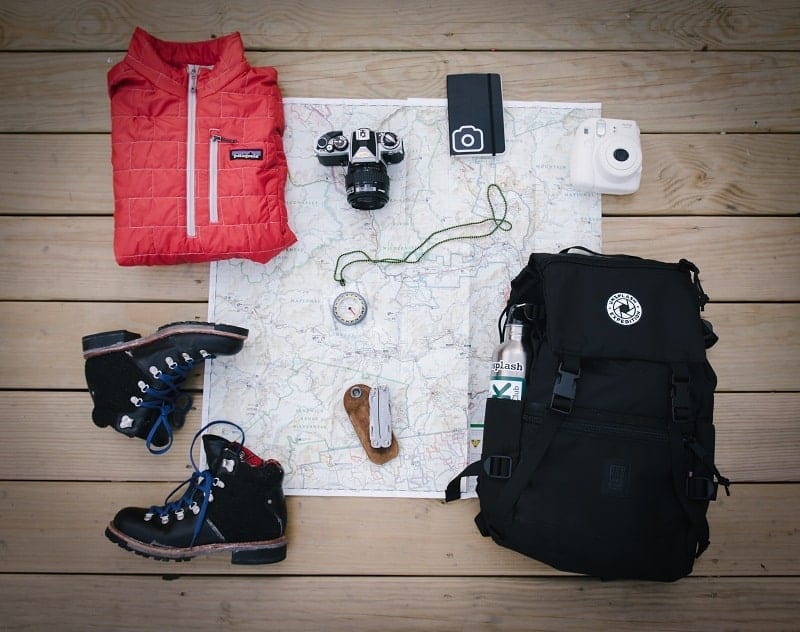 This is a common mistake made by many rookie backpackers. It may be tempting to throw extra supplies or luxury items in your backpack, but it is important to realize that every ounce of weight counts.
This is a common mistake made by many rookie backpackers. It may be tempting to throw extra supplies or luxury items in your backpack, but it is important to realize that every ounce of weight counts.
Your bag might feel light now, but miles into your trek you’ll feel like you’re carrying around a bag of bricks. As exhaustion sets in, the more difficult it will be to shoulder the same amount of weight. Only pack what is absolutely necessary and find the lightest supplies in each category.
Despite its weight, water is one item that you don’t want to skimp out on and one that should be considered an absolute necessity. Because of this, it is important to cut weight in other areas.
Chances are, you will be crossing a wide variety of terrain. Each mile consists of roughly 2,200 steps, so plan accordingly. Go light on the clothes; you will be getting dirty anyway! Pick a light sleeping bag and tent and try to take only one or two pieces of cookware.
TIP: SAVE SPACE with COLLAPSIBLE WATER BOTTLE
Watch the Weather
Be sure to check the forecast before setting out on your trip, and consider contacting local forest ranger offices, hunting or guide offices for additional insight into potential weather conditions. Micro-climates and abruptly changing the weather in mountainous areas are a common event and you don’t want to get caught unprepared.
There is nothing worse than being miles away from civilization when a big storm hits. Not only will your campsite get soggy, you may be forced to carry wet supplies and hike in the rain. Those supplies will weigh a lot more once they are wet! If the weather looks like it may turn bad, postpone that trip for another day.
Keep Your Supplies Dry – Especially Your Sleeping Bag
When pitching your tent, do not pick a low spot in a valley or camp within 200 feet of a water source. Flat ground works great for setting up a tent, but water also tends to pool in these areas. Make sure there is proper water drainage.
A wet sleeping bag can ruin your trip. No one wants to crawl into a cold, soggy sleeping bag at night. Wrap it in a waterproof container, even if you backpack claims to be waterproof. Heavy duty trash bags are a great way to achieve this without incurring a lot of costs. Be sure to invest in a waterproof map, as well.
Pick Appropriate Footwear
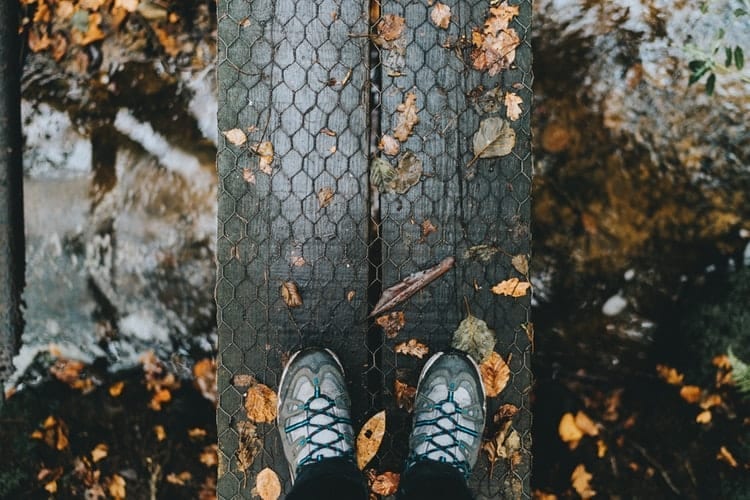 Think comfortable, durable and light. Blisters can ruin your experience, so be sure to pick light trail shoes instead of heavy boots or something that will rub against the back of your feet.
Think comfortable, durable and light. Blisters can ruin your experience, so be sure to pick light trail shoes instead of heavy boots or something that will rub against the back of your feet.
Wearing comfortable ventilated, yet padded socks can also help. And we suggest bringing along an extra pair or two to change out as the ones you are hiking in will get moist fast. Moisture softens the skin and will make it more prone to blisters, cuts, and sores if not kept dry. On long daily hikes, consider switching out your socks 1-3 times a day, letting the previous ones dry out before returning them to wear.
Store Your Food Properly
Not only will proper food storage make your food last longer, it will protect your campsite from wild animals looking for an easy meal. One way to keep your food safe is investing in smell-proof backpacks. These backpacks use odor-locking technology to keep smells from escaping.
By utilizing proper food storage containers and hanging food out of the reach of wild animals, you can minimize the risk of losing your food stash while you are sleeping. This also discourages wild animals from interacting with humans.
Waterproof Your Backpack
You can either carry a simple rain cover for your pack, or you can waterproof it. I like the rain cover because some packs don’t have the zippers sealed from rain as much as I would prefer. Also, seal individual contents in watertight bags, like Ziplocs.
Start Small and Work Your Way Up
Don’t make your first excursion a week-long wilderness hike. For your inaugural journey, we suggest a ½ day hike. Once you have a few of those under your belt, consider an all-day excursion or a one-night stay.
During your practice hikes, time yourself and take note of your pace to get a good idea how long it will take you to cross certain types of terrain over specific periods of time. This will be critically important for when you undertake longer hikes where you may need to make it to a campsite or watering hole before nightfall.
These smaller backpacking excursions will also afford you the opportunity to develop your skills closer to home, where it is safe. If any issues arise, you’ll only be a short distance from help.
If Possible, Use an Established Campsite
Dirt campsites with an established water source will make your experience easier. Research campsites near you. These sites often have poles and bear-proof containers to make storing your food easier. Also, this will put yours around other campers. Expert campers are very generous with beginners, and it will ease any anxiety you may have about sleeping alone. This is a great way to get some advice from fellow backpackers.
Get a Good Headlamp
A good headlamp is one of your best insurances against problems. What if you get lost or just stay out too long? A good headlamp will help you navigate back to your car. Headlamps are essential for camping at night, so you can see what you are doing. Some of the better headlamps have a flashing red light mode, in case you are lost and need to try to signal for help.
What to look for in a good hiking headlamp: You want to get a headlamp with at least two modes: flood and spot. The flood mode is for seeing something in camp up close. This is the mode you will be using most of the time. The spot mode is for projecting the light further down the trail if you got caught out past sundown. You will need to be able to see a minimum of 100 feet down the trail in order to navigate your way back to the car in the dark. A recommended minimum lumens for the spot mode is well over 200 lumens. Make sure your headlamp is not so confusing with the button-pressing sequence that it is useless to you when you need it. Another nice feature is the ability to dim the light brightness to save battery power.
Practice Before Your Outing
The best way to work out the kinks of your camping experience is to get them out of the way before you actually go backpacking. Pitch your tent in the backyard a few times, first. Make yourself an expert at setting it up, tearing it down, cooking outside, and properly storing your food.
Be sure to both test and inspect your equipment multiple times, putting each through testing in your yard prior to actual use in the wild. The last thing you want is to get caught out in nature with a malfunctioning item.
Know the Rules
Make sure you understand any regulations your area has regarding backpacking and camping in the area you are hiking in. Often, there can be restrictions on where you can camp, what kind of fire you can build, and if you need to pay any fees associated with your trip.
If you are contemplating a backpacking trip, make sure you do the appropriate research before setting out. By following the tips in this guide, you will be prepared for your first journey into the wilderness and less likely to commit the many mistakes often made by beginners.
Now Enjoy the Outdoors!
We hope you found this introductory guide to the top 10 tips for beginner backpackers helpful. The outdoors can be a wonderful place to explore, but it can also be dangerous for those not well acquainted with outdoor survival techniques and backpacking best practices. Use this short guide as an introduction into some areas where you can practice and perfect your skills, and never stop learning. If you have any questions don’t hesitate to reach out.
Bring the 10 Essentials
The Scouts and the Forest Service recommend 10 essential items for day hiking:
- Navigation aids: A copy of the trail write-up from your guidebook, a topographic map, and a GPS receiver. A compass and the know-how to use it would be good, too.
- Sun protection
- Insulation: Your jacket, hat, gloves, and your rain shell and pants.
- Illumination: Your headlamp and a full set of spare batteries for it and your GPS.
- First-aid supplies: Including a blister kit.
- Repair kit and tools: Multi-tool and duct tape. You can wrap some of the latter around a business card for if you blow a shoelace or have a backpack or shoe failure.
- Firestarters
- Extra nutrition
- Hydration
- Emergency shelter: Space blankets are light and cheap but will help you retain your body heat if you are stranded at night.

